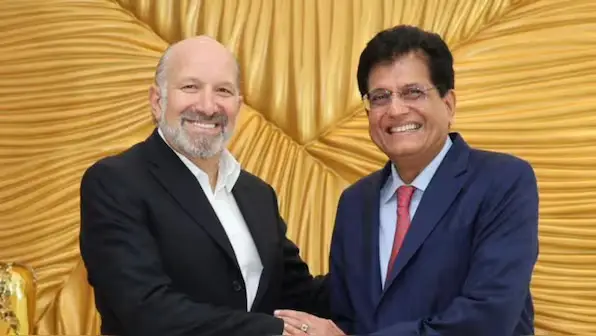India set to sign interim US trade deal by July 8, before 90-day pause ends

India and the United States are reportedly on the brink of signing an interim trade deal by July 8, 2025, marking a significant step forward in bilateral economic relations. The deal is expected to be finalized just before the expiration of a 90-day pause on trade negotiations, a timeline that both sides had agreed upon earlier this year to reassess and restructure their approach to longstanding trade disagreements.
This interim agreement, though not a comprehensive Free Trade Agreement (FTA), holds strategic importance, particularly as both nations aim to strengthen supply chains, counterbalance China’s dominance in the Indo-Pacific, and deepen economic cooperation.
Background: Trade Frictions and the 90-Day Pause
Trade negotiations between India and the US have seen multiple ups and downs over the past decade. Key sticking points have included tariff disputes, market access limitations, intellectual property rights, and regulatory barriers. While previous efforts to establish a broader trade framework faced roadblocks, both nations agreed earlier this year to a 90-day pause to resolve core issues and streamline priorities.
This pause was not a break in ties but rather a tactical window to reassess and finalize terms for an interim pact — one that addresses urgent matters and lays the groundwork for a full-fledged agreement in the future.
Key Features of the Expected Interim Deal
Though the full details of the upcoming pact are yet to be officially disclosed, sources suggest the interim trade deal could include:
- Tariff Reductions on Select Goods: Likely areas include agricultural products, medical devices, IT goods, and textiles, benefiting both Indian exporters and US businesses.
- Market Access Improvements: Particularly for US dairy and agricultural producers, and for Indian pharmaceuticals and generic drugs in the US market.
- Digital Trade and E-commerce: Frameworks for secure data transfers, cross-border e-commerce, and fintech collaboration may be introduced.
- Standard Harmonization: Efforts to align regulatory standards and simplify customs procedures for faster clearance and reduced compliance burden.
- Investment Facilitation: Promoting two-way investments, especially in clean energy, semiconductor manufacturing, and critical minerals.
Strategic Importance for India
This deal holds more than just commercial value for India. It reflects India’s geostrategic shift toward deeper integration with Western economies. As global supply chains evolve post-COVID and amid rising geopolitical tensions, India is positioning itself as a reliable, democratic, and cost-effective manufacturing hub.
With ‘Make in India,’ ‘Atmanirbhar Bharat,’ and PLI schemes in full swing, easier trade terms with the US could bring in technology transfers, FDI, and export diversification, bolstering India’s goal of becoming a $5 trillion economy.
Benefits for the US
For the United States, this interim trade deal is equally strategic. As Washington seeks to reduce dependence on China, India serves as a vital alternative in Asia. The deal could:
- Open Indian markets to American farmers and tech companies.
- Strengthen defense and strategic cooperation by aligning trade and technology frameworks.
- Help US firms diversify sourcing and manufacturing partners in areas like electronics, pharmaceuticals, and rare earth elements.
Challenges and Areas of Caution
Despite the progress, challenges remain. Both countries must still address:
- Data privacy and localization laws in India that the US firms see as restrictive.
- Visa and labor mobility issues, particularly affecting Indian IT professionals.
- Concerns around intellectual property protection, especially in pharmaceuticals and software.
- Potential domestic political opposition from industry groups fearing import competition.
This is why the interim deal is being framed as a “confidence-building measure” — allowing both sides to secure early wins while building trust for a broader, long-term agreement.
Geopolitical and Global Trade Context
The timing of this deal is crucial. It comes amid:
- Ongoing US-China tensions, especially in trade and technology.
- The Quad’s increasing strategic coordination, where India and the US are key players.
- India’s new FTAs with countries like Australia, UAE, and the UK (under negotiation) — reflecting its shift from protectionism to proactive engagement.
A successful interim deal with the US would further cement India’s position as a key player in global trade realignment.
Conclusion
With the July 8 deadline looming, the anticipated interim trade deal between India and the US could mark a turning point in bilateral relations. Beyond immediate economic gains, it signals a mutual desire to reset trade ties, deepen strategic cooperation, and create a platform for future collaboration across technology, security, and sustainable development.
If finalized as expected, this agreement will not only boost trade flows but also reinforce India’s reputation as a rising global economic power — one capable of constructive diplomacy and agile policy execution in an increasingly complex world.






